- Nearly 9,000 square kilometers (3,475 square miles) had been burned across Bolivia by mid-September, according to government figures.
- Tucabaca Valley Municipal Wildlife and Otuquis National Park, both in the semi-arid Chiquitania region of southern Bolivia, have been among the protected areas most affected by fire in 2022.
- Satellite data show fires burned across some 130 square kilometers (50 square miles)—or 5%— of Tucabaca Valley Municipal Wildlife in September, and reignited in early November. In Otuquis, a fire that began Aug. 31 had spread across around 80 kilometers (50 miles), mostly along a road, by Sept. 3.
- In addition to habitat loss for the region’s wildlife, smoke from the fires reportedly has resulted in vision and respiratory problems for residents of nearby communities.
ROBORÉ, Bolivia — Tucabaca Valley Municipal Wildlife Reserve comprises around 2,644 square kilometers (1,021 square miles) of semi-arid forest and scrubland in the heart of southern Bolivia’s Chiquitania region. But the reserve, like the region around it, was beset by wildfires this year.
In September, fires burned across some 130 square kilometers (50 square miles)—or 5%—of Tucabaca’s territory, according to satellite data from the U.S. National Aeronautics and Space Agency (NASA) visualized on Global Forest Watch. The data show the fires began in early September and were concentrated in two large burns in the southern part of the reserve.
Tucabaca (also referred to as “Tucavaca”) was already severely damaged by fire in 2019 and 2021; Global Forest Watch data show the reserve lost around 3,330 hectares (33.3 square kilometers or around 13 square miles) of forest to fire during those two years alone. In comparison, a combined 43 hectares was lost to fire in 2018 and 2020.
The Tucabaca Valley is located in the municipality of Roboré, and close to the border with Brazil. The municipal wildlife reserve was created in 2000 to help safeguard the Chiquitania dry forest ecoregion. Rivers originating in the reserve’s mountains provide water for the entire region, as well as the southern portion of the Bolivian Pantanal wetland.
Community residents, firefighters and military personnel worked together to extinguish this year’s fires as they spread into Tucabaca reserve. But Rubén Dario Arias, president of the Roboré Civic Committee, said that it was difficult to battle the flames due to insufficient resources.
Community members from Santiago de Chiquitos attempt to stop the fire from advancing in Tucabaca Valley Municipal Wildlife Reserve. Image by Claudia Belaunde.
“We don’t have the economic or logistical capacity; we need vehicles,” Arias said. “We were left without a drop of water and had to start going out into the community, knocking on doors for some.”
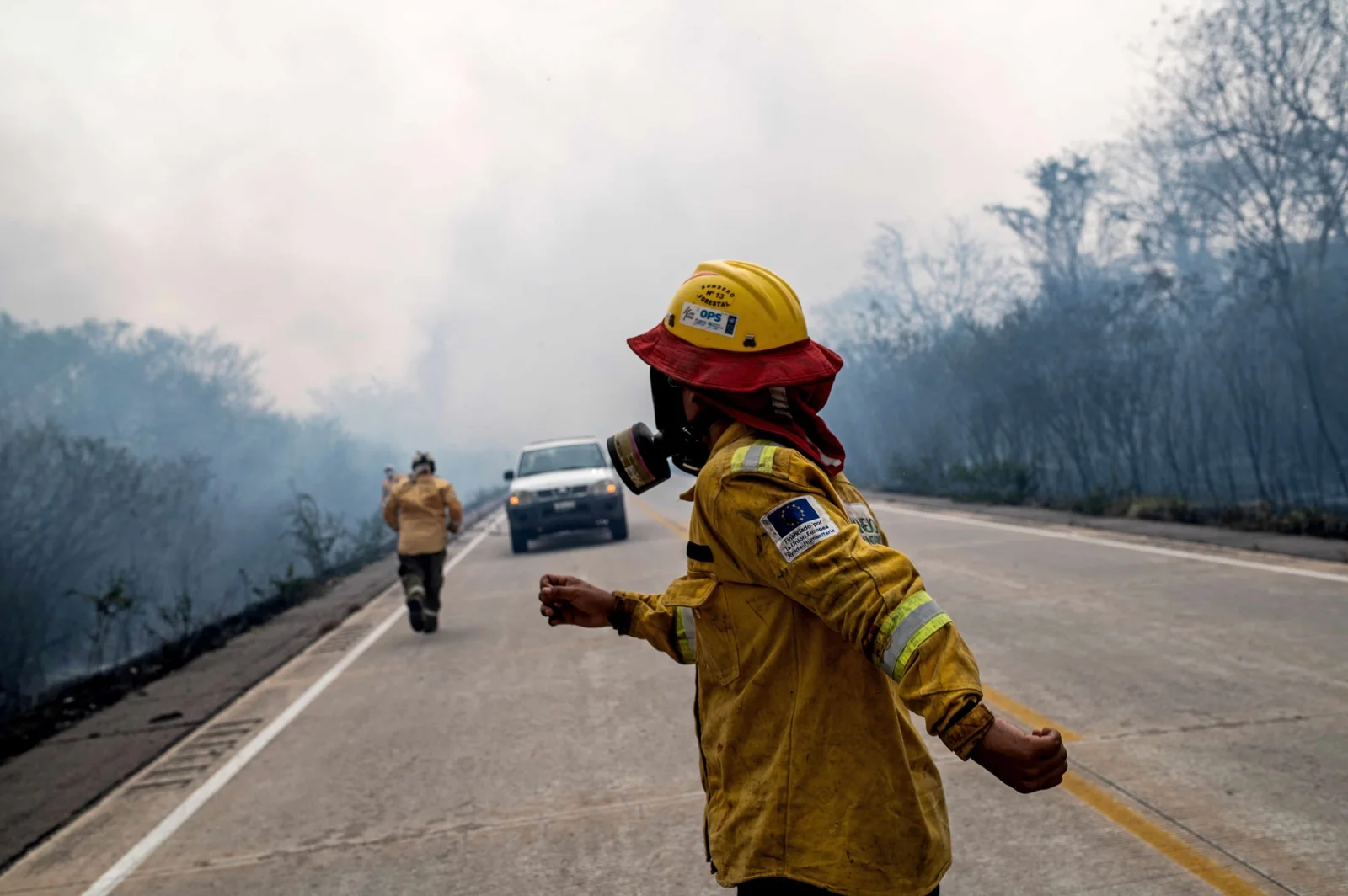
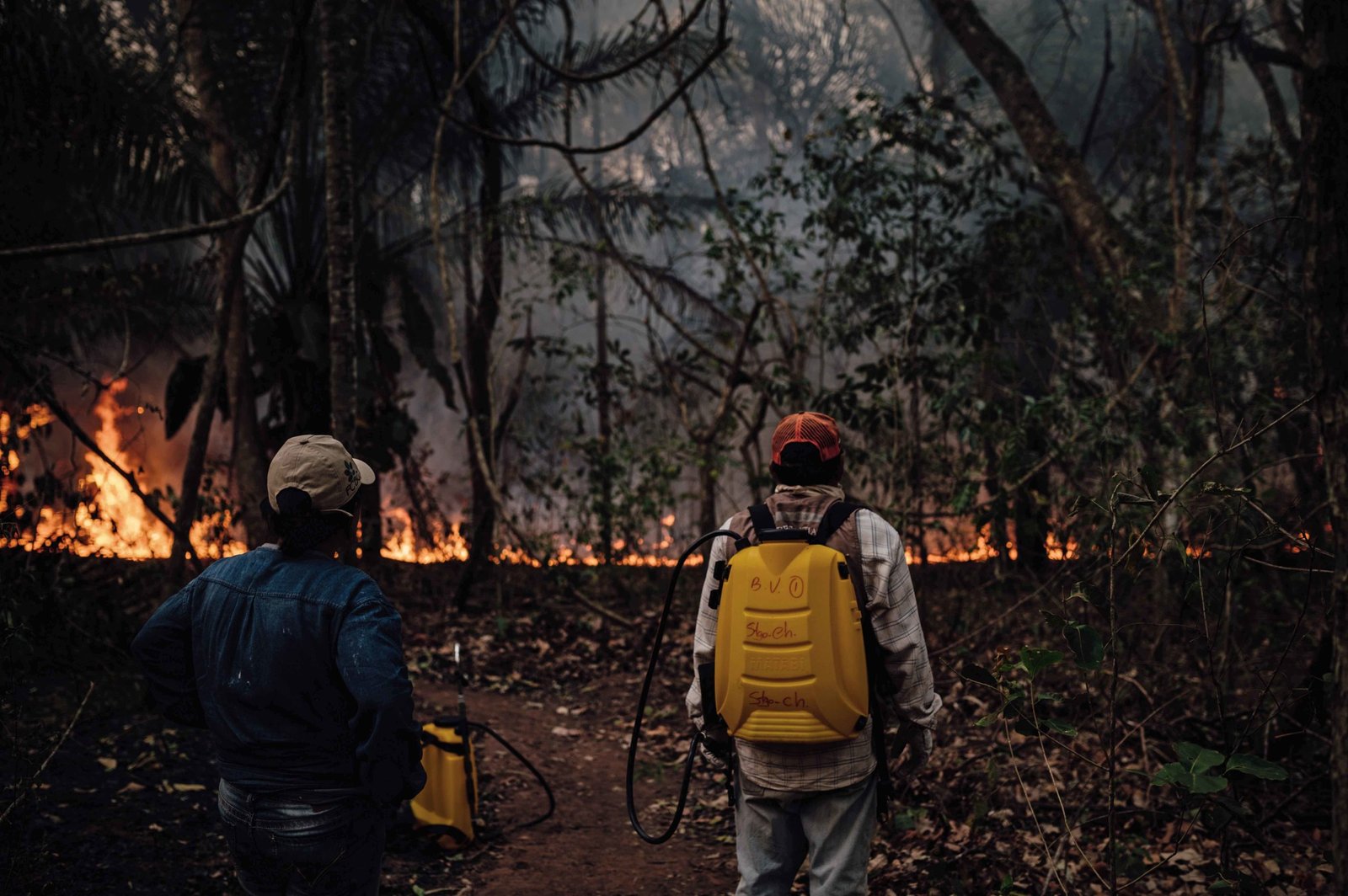
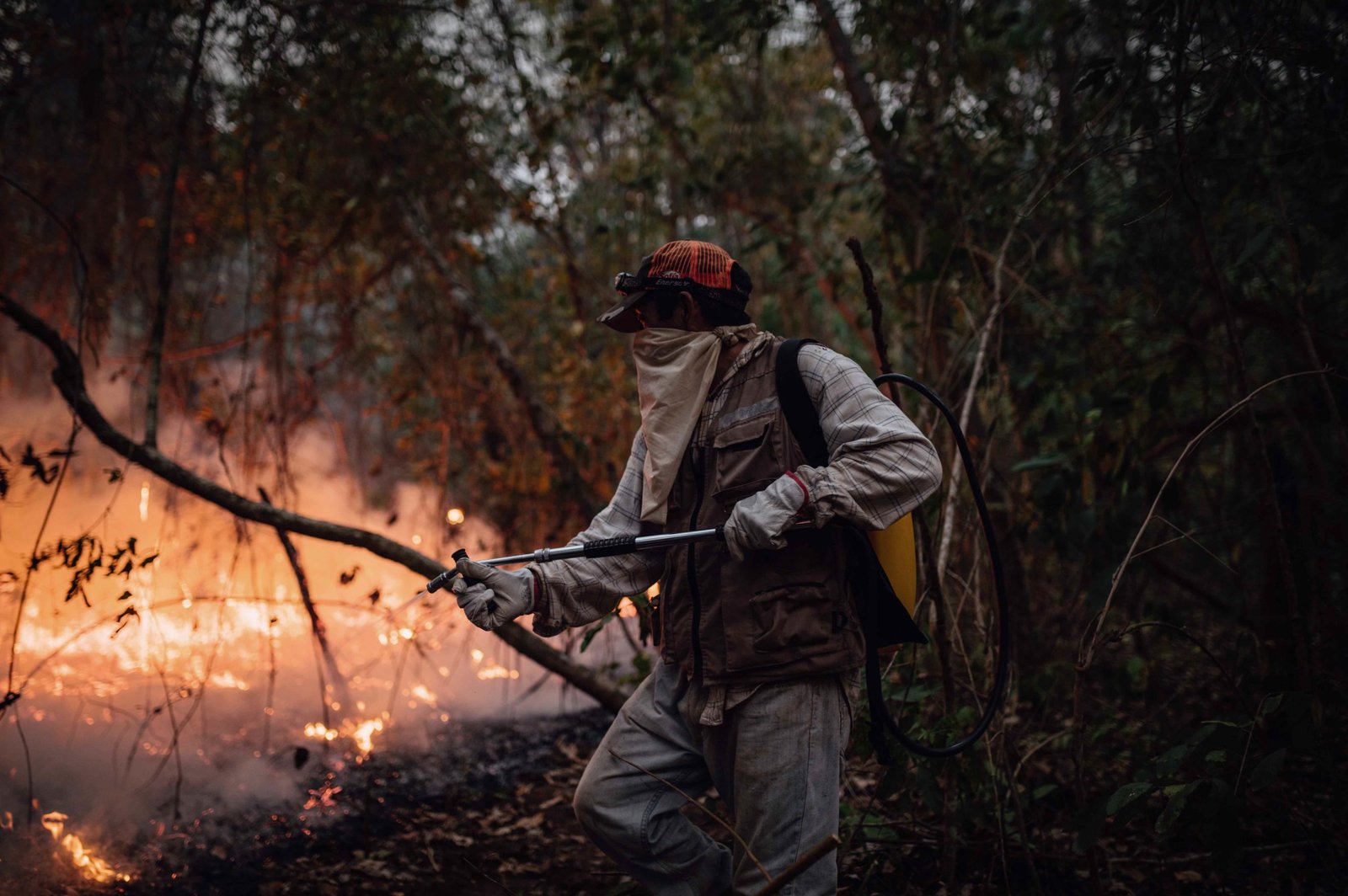
Arias said that the fires were caused by “outsiders.” Alejandro Quezada, deputy governor of the Chiquitos province in Santa Cruz, said windy conditions exacerbated the situation.
Otuquis National Park, which lies some 50 kilometers (31 miles) south of Tucabaca along the border with Paraguay and Brazil, was also beset by fire this year. NASA data visualized on Global Forest Watch detected a small area of fire activity on Aug. 31 along a road in the southeastern portion of the park that leads to the city of Puerto Suárez. By Sept. 3, the fire had spread some 80 kilometers (50 miles) along the road in Otuquis as well as into the surrounding region.
The fire burned for nearly two weeks — NASA data show it had been extinguished by Sep. 11 — and damaged wildlife habitat. In addition to being a national park, Otuquis is also part of a RAMSAR site, a designation that denotes important wetland areas; it is inhabited by many species, such as marsh deer (Blastocerus dichotomus), capybaras (Hydrochoerus hydrochaeris), giant otters (Pteronura brasiliensis), maned wolves (Chrysocyon brachyurus) and Bolivian anacondas (Eunectes beniensis).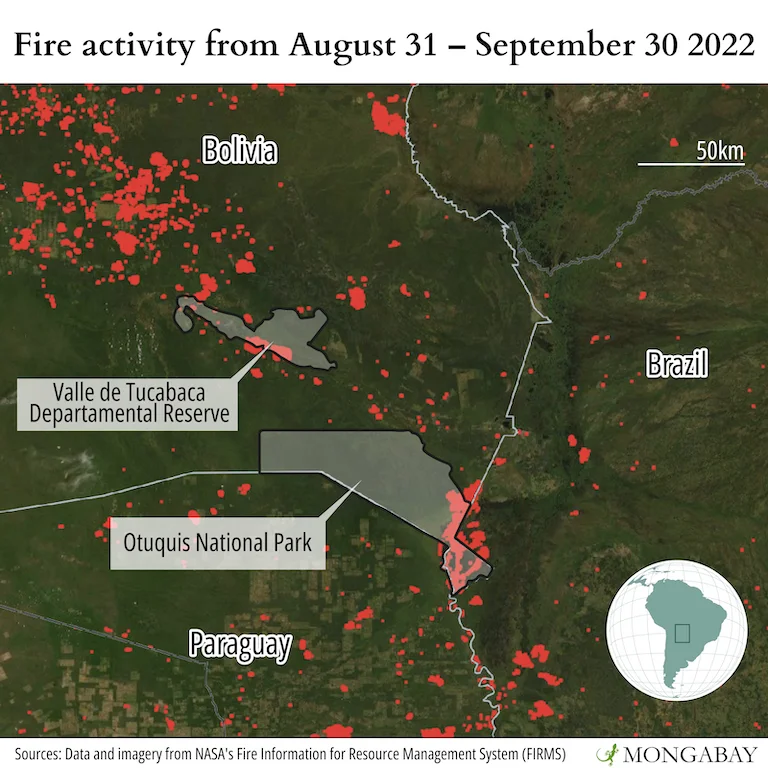
Yovenka Rosado, director of the natural resources agency of the department of Santa Cruz, told Mongabay that the fire in Otuquis park progressed rapidly and that there were days when it was impossible to access areas due to flames raging out of control.
Firefighters “worked all hours,” Rosado said, adding that the department government requested additional resources and tools from the Bolivian central government, including a helicopter that was “urgently needed” to drop water on the blazes.
According to vice minister of civil defense Juan Carlos Calvimontes, significant efforts to tackle the fire had been carried out since Sep. 1, with specialized personnel from the Bolivian Navy deployed to Otuquis park and a monitoring center installed in the area. Actions to contain the fire were made both on land and from the air, with a total of 108,000 liters of water discharged.
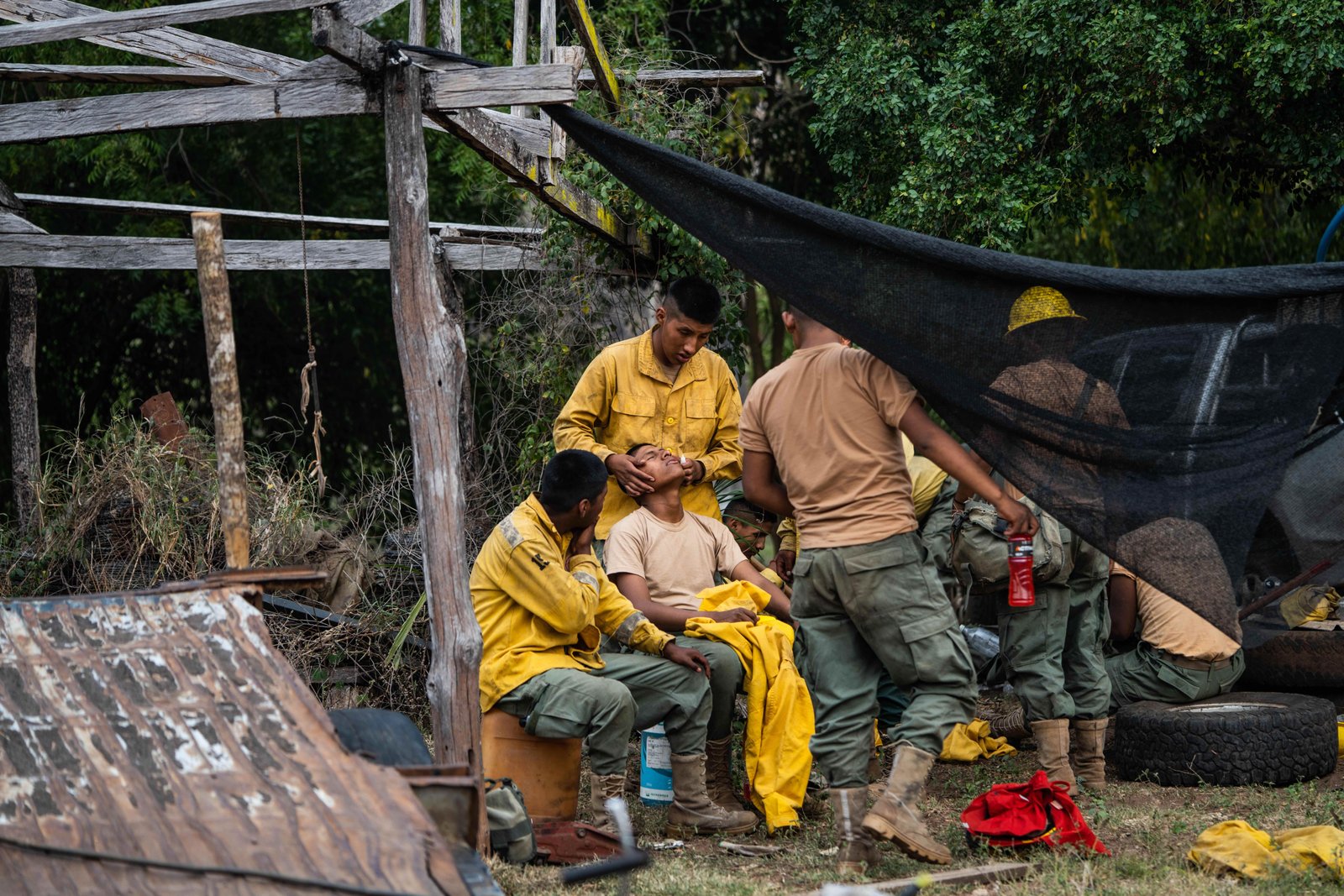
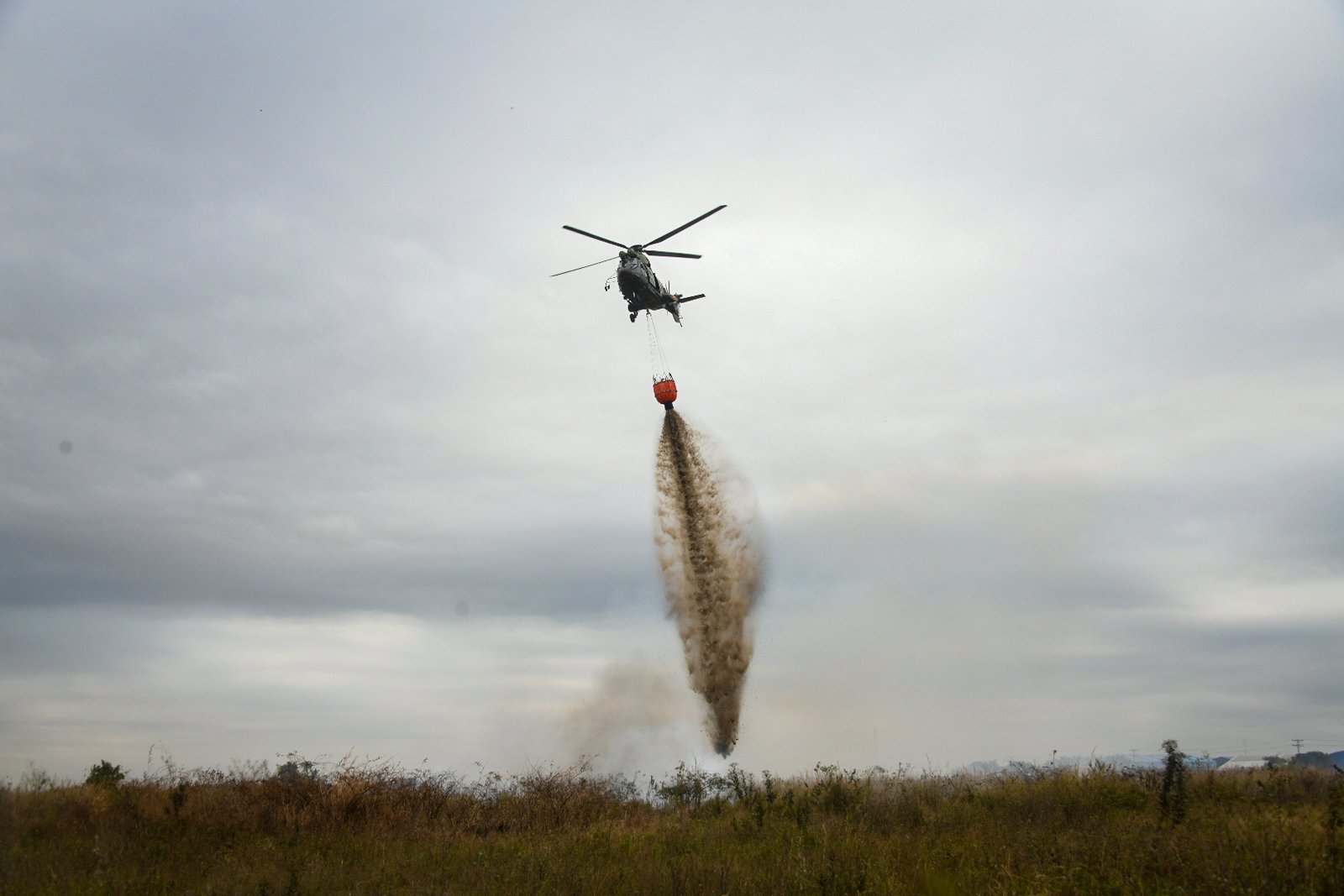
According to Calvimontes, almost 9,000 square kilometers (3,475 square miles) had been burned by mid-September. He said that the aim is to prevent the total amount of land burned in 2022 from reaching 15,000 square kilometers (5,792 square miles).
In addition to habitat loss, smoke from the fires reportedly resulted in vision and respiratory problems for residents of nearby communities. Although efforts to control the fire in Otuquis National Park have been successful, the fear of it reigniting remains – a fear that grows smaller day by day as Bolivia’s rainy season approaches.
However, the same cannot be said for Tucabaca. NASA data show fire activity resumed in the reserve in early November. By Nov. 9, the largest of these new blazes had affected an area comprising some 1,000 hectares before dwindling on Nov. 10.
This is a translated and adapted version of a story that was first reported by Mongabay’s Latam team and published here on our Latam site on September 16, 2022.
Banner image: Fires near the community of Quitunuquiña in the municipality of Roboré in the department of Santa Cruz. Image by Claudia Belaunde.
Feedback: Use this form to send a message to the editor of this post. If you want to post a public comment, you can do that at the bottom of the page.











